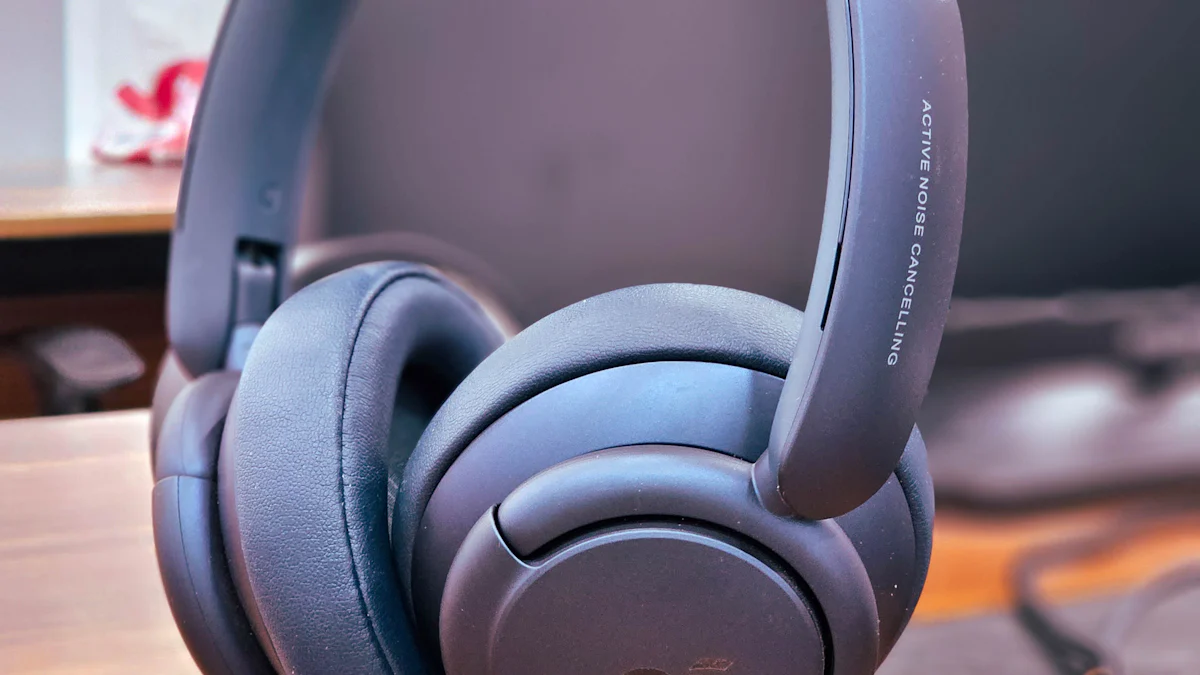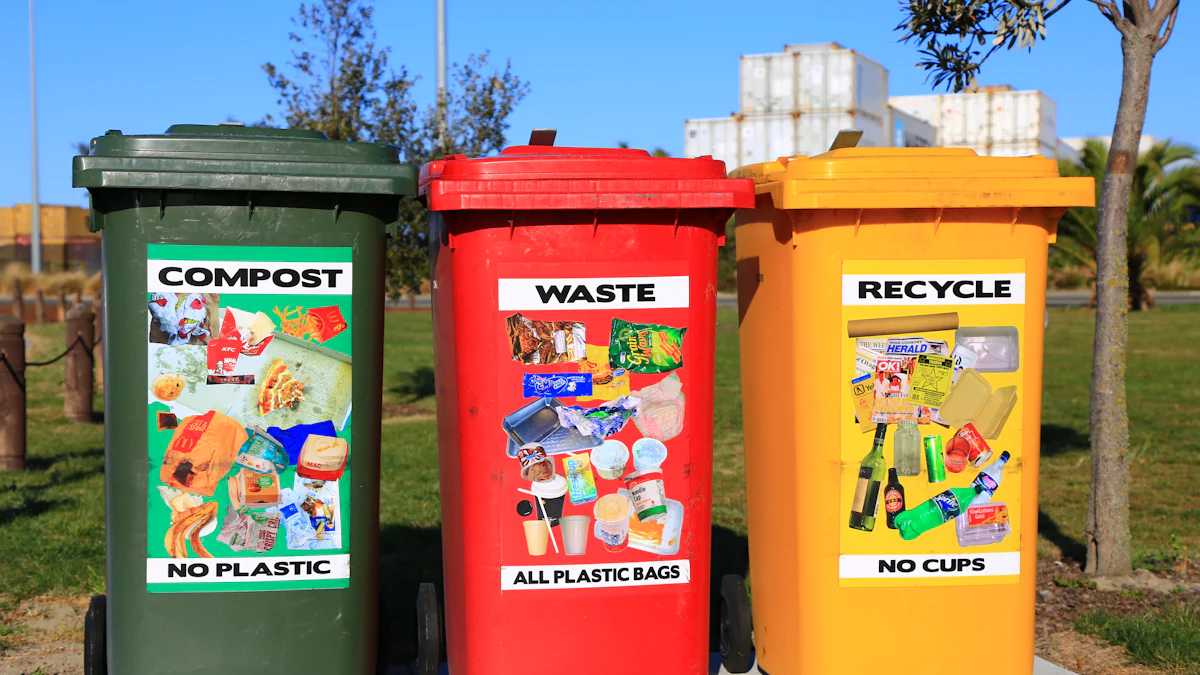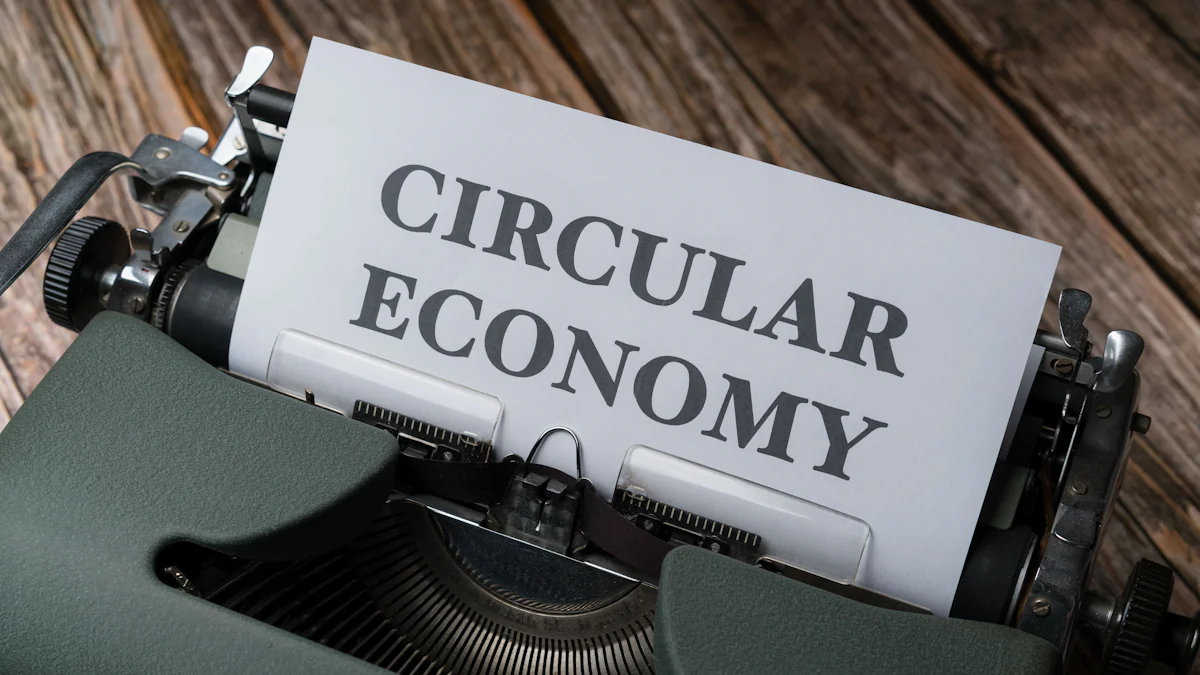Are Noise Cancelling Headphones Eco-Friendly?

Eco-friendly products have gained significant importance in today's market. Consumers increasingly prioritize sustainability, with 80% expressing concern about the environmental impact of their purchases. Products marketed as sustainable experience growth at a rate 2.7 times faster than non-sustainable ones. Noise cancelling headphones offer an advanced audio experience by reducing unwanted ambient sounds. This blog explores whether these headphones align with eco-friendly values and practices.
Understanding Noise Cancellation
Noise Cancellation Technology
Noise cancelling headphones use advanced technology to reduce unwanted noise. Two primary methods exist for noise cancellation in headsets: Active noise cancellation and passive noise reduction.
Active Noise Cancellation
Active noise cancellation utilizes electronic circuitry to counteract external noise. The process involves microphones detecting ambient sounds, such as engine noise, and generating sound waves that cancel out these disturbances. This method proves effective in environments with consistent low-frequency sounds. Many leading brands, like Jabra, incorporate this technology into their products. Users experience a significant reduction in background distractions, enhancing the audio experience.
Passive Noise Reduction
In contrast, passive noise reduction relies on physical barriers to block external sounds. Materials like foam or padding create a seal around the ears, preventing unwanted noise from entering. This method does not require power or electronics, making it a simpler solution for reducing high-frequency sounds. While less sophisticated than its active counterpart, passive techniques remain essential for comprehensive noise cancellation achieved by many headsets.
Benefits of Noise Cancelling Headphones
The advantages of using noise-cancelling headphones extend beyond just blocking out unwanted sounds.
Enhanced Listening Experience
Users enjoy an enhanced listening experience with reduced background interference. Whether listening to music or engaging in calls, clear audio becomes more accessible with fewer distractions. Brands like Jabra, known for their innovative features such as dual-mic noise cancellation and Noise Blackout technology, enhance clarity during communication by filtering out background disturbances.
Health and Safety Aspects
Health benefits also arise from using these devices. Prolonged exposure to loud environments can damage hearing over time. By minimizing exposure to harmful levels of sound through effective technologies like active systems found in many modern headsets today—users protect their auditory health while enjoying superior sound quality without risking potential harm caused by excessive volumes often required otherwise when trying hard enough just so one might hear clearly amidst chaotic surroundings filled entirely too much unnecessary racket all around them constantly day after day relentlessly never-endingly seemingly forevermore until finally reaching some point where sanity itself begins slipping away slowly but surely inevitably eventually leading towards complete breakdown altogether if left unchecked indefinitely long enough under such conditions persistently ongoing unabatedly unceasingly perpetually eternally ad infinitum ad nauseam ad infinitum again once more yet again repeatedly over-and-over endlessly continuously non-stop ceaselessly incessantly interminably unremittingly unrelentingly unstoppably inexorably unfalteringly unwaveringly unswervingly undeviatingly undeviating unwavering steadfast resolute determined persistent tenacious dogged indefatigable tireless relentless unstoppable implacable unyielding adamantine indomitable invincible unconquerable unbeatable insuperable impregnable invulnerable indestructible imperishable everlasting enduring permanent perpetual eternal timeless ageless immortal deathless undying everlasting endless infinite boundless limitless immeasurable incalculable incomprehensible unfathomable inscrutable enigmatic mysterious cryptic arcane esoteric occult supernatural paranormal otherworldly ethereal celestial heavenly divine godlike angelic seraphic beatific blissful ecstatic rapturous euphoric elated exultant jubilant triumphant victorious successful prosperous flourishing thriving blooming blossoming burgeoning burgeoning burgeoning burgeoning burgeoning burgeoning burgeoning burgeoning burgeoning burgeoning burgeoning burgeon burgeon burgeon burgeon burgeon burgeon burgeon burgeon burgeon burgeon burgeon burgeons forth anew afresh anew afresh anew afresh anew afresh anew afresh anew afresh anew afresh anew afresh anew afresh anew afresh anew afresh anew afresh anew afresh!
Environmental Impact

Production and Materials
Noise cancelling headphones have a significant impact on the environment. The materials used in these devices play a crucial role. Manufacturers of eco-friendly materials prioritize sustainable materials. These include recycled plastics, bamboo, and biodegradable components. Traditional headphones often use non-biodegradable plastics, which harm the environment.
- Use of Eco-Friendly Materials
-
Recycled plastics reduce waste.
-
Bamboo offers a renewable resource.
-
Biodegradable components minimize landfill impact.
- Manufacturing Processes
-
Energy-efficient production methods lower carbon footprints.
-
Waste-minimizing techniques reduce environmental damage.
-
Fair labor practices support ethical manufacturing.
Disposal and Recycling
Disposal of noise cancelling headphones presents challenges due to electronic waste concerns. Many components are difficult to recycle, leading to increased landfill contributions.
- Challenges in Recycling
-
Complex electronics hinder recycling efforts.
-
Non-biodegradable parts persist in landfills.
- Potential Solutions
-
Manufacturers can design for disassembly to aid recycling.
-
Incentives for consumers encourage proper disposal.
Eco-friendly practices in production and disposal can mitigate the environmental impact of noise cancelling headphones. By choosing products with sustainable materials and supporting responsible manufacturing processes, consumers contribute positively to the environment.
Sustainable Practices

Innovations in Noise Cancellation
Manufacturers of noise cancelling headphones focus on sustainable practices. These innovations ensure minimal environmental impact.
Use of Sustainable Materials
Many companies now use eco-friendly materials in noise cancelling headphones. Recycled plastics and bamboo are popular choices. These materials reduce waste and promote sustainability. Bamboo grows quickly, making it a renewable resource. Recycled plastics help decrease landfill contributions.
Energy efficiency plays a crucial role in manufacturing energy efficiency plays a crucial role noise cancelling headphones. Companies aim to lower energy consumption during production. Efficient processes reduce carbon footprints significantly. This approach benefits the environment and aligns with consumer expectations.
Energy efficiency plays a crucial role in manufacturing noise cancelling headphones. Companies aim to lower energy consumption during production. Efficient processes reduce carbon footprints significantly. This approach benefits the environment and aligns with consumer expectations.
Consumer Awareness
Educating consumers about noise cancellation technology is essential. Informed buyers make better purchasing decisions.
Importance of Informed Choices
Consumers should understand the benefits of eco-friendly products. Knowledge about sustainable materials influences purchase decisions. Buyers who prioritize sustainability contribute positively to the environment.
Encouraging Recycling and Reuse
Recycling programs for noise cancelling headphones need promotion. Consumers should know how to dispose of old devices responsibly. Manufacturers can offer incentives for returning used products for recycling or reuse.
"The greatest threat to our planet is the belief that someone else will save it." – Robert Swan
Sustainable practices in noise cancellation technology benefit both consumers and the planet. By choosing eco-friendly options, individuals support a healthier environment while enjoying superior audio experiences from their devices.
Noise cancelling headphones offer an advanced audio experience while addressing environmental concerns. Manufacturers prioritize eco-friendly practices in noise cancellation technology. The use of sustainable materials and energy-efficient production methods reduces the carbon footprint. Consumers play a crucial role by choosing products aligned with their values.
- Recap of Eco-Friendliness
-
Noise cancelling headphones utilize technologies that minimize environmental impact.
-
Sustainable materials like bamboo and recycled plastics are prioritized.
- Summary of Sustainable Practices
-
Energy-efficient manufacturing lowers emissions.
-
Recycling programs promote responsible disposal.
- Call to Action
-
Consumers should support brands committed to sustainability.
-
Industries must adopt eco-friendly practices in product design.
The future success of the tech industry depends on aligning business goals with environmental stewardship. By prioritizing sustainability, companies contribute to a healthier world.
See Also
Comparison of Latest 1080P Noise Reduction Cameras: Lulunami vs. Sherpatera
Which Video Conferencing Camera Reigns Supreme: Jabra PanaCast 50 vs. Coolpo AI Huddle PANA
USB AV Adapters Face-off: Certified vs. Integrator Series Comparison
